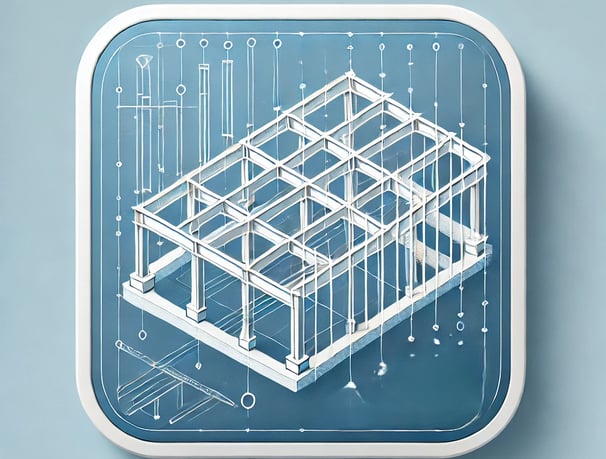Ways to Manage Micromanagement Stress at Work
Tired of feeling suffocated by constant oversight? Ways to manage micromanagement stress at work are crucial for regaining control and boosting productivity. Micromanagement drains your morale and confidence. Discover strategies to fight back, reclaim your autonomy, and stop stress from holding you hostage. Take charge of your work environment and well-being today.
WORKPLACE STRESS
11/26/20246 min read
Knowing in which ways to manage micromanagement stress at work is essential for enhancing employee well-being, team productivity, and overall workplace harmony.
Micromanagement, a widespread issue, undermines trust, autonomy, and morale, creating a tense and counterproductive work environment. However, with the right strategies, both managers and employees can mitigate its impact.
In this article, we will explore evidence-based methods to tackle micromanagement stress, ensuring a healthier and more collaborative workplace. To manage these challenges effectively, it’s important to understand the core issues and adopt practical solutions that can be applied in everyday work settings.
One of the most important aspects in tackling micromanagement stress is the role of leadership in reducing workplace stress and affirmation best practices for managers. Effective leadership plays a significant role in fostering an environment where employees feel empowered and trusted, rather than constantly scrutinized. By shifting leadership styles to support autonomy and decision-making, managers can reduce micromanagement tendencies that often lead to heightened stress levels.
Additionally, workplace stress and its effect on team dynamics with an accent on building resilient teams is an important concept to consider. When stress is managed effectively within teams, employees are more likely to collaborate and support one another, reducing the strain that micromanagement can cause. Building team resilience through trust and open communication helps create an environment where micromanagement is less likely to thrive.
Another effective strategy in managing micromanagement stress is creating a healthy work culture by incorporating policies and practices to reduce stress. A positive and supportive work culture is key to preventing micromanagement from taking root. Policies that promote work-life balance, employee recognition, and constructive feedback help reduce the stress associated with micromanagement. These policies, when implemented consistently, ensure that employees feel valued and that their autonomy is respected.
In parallel, leveraging emotional intelligence to manage workplace stress: a guide for employees is a vital tool for employees dealing with micromanagement. By cultivating emotional intelligence, employees can manage their reactions to micromanagement and engage in constructive conversations with their managers. This ability to self-regulate emotions can reduce the impact of micromanagement stress and create more effective dialogue between employees and leaders.
Navigating workplace stress during times of change and uncertainty is another crucial point in the management of micromanagement stress. During periods of change, such as organizational restructuring or shifts in team dynamics, micromanagement can often increase as a way for managers to feel in control. However, helping employees navigate these times with clarity and support can prevent excessive oversight and build trust.
Finally, the impact of workplace bullying on stress levels with strategies for prevention and intervention should also be considered in the context of micromanagement. Micromanagement, if left unchecked, can sometimes lead to a toxic work environment that borders on workplace bullying. Intervening early with proper support structures in place can prevent the escalation of stress and help maintain a respectful, collaborative work environment.
By addressing these areas, both managers and employees can reduce stress, improve collaboration, and foster a more productive workplace environment.
Managing Micromanagement Stress at Work
Managing micromanagement stress at work is done by fostering communication, clarifying expectations, and promoting leadership that prioritizes trust and autonomy. These approaches are crucial in reducing the harmful effects of micromanagement while nurturing a productive, positive work culture.
Below, we’ll dive into practical strategies that not only align with real-world research but also reflect our experiences and lessons learned in tackling micromanagement stress.


Open Communication: The Foundation for Stress Relief
One of the most important tools we've found in managing micromanagement stress is open communication.
We’ve noticed that many workplace issues arise from misunderstandings or unspoken frustrations, and micromanagement is no exception.
When we focus on creating clear and open dialogue, it paves the way for understanding and resolving these conflicts.
Voice Concerns Constructively: It’s easy to feel frustrated under constant oversight, but we’ve learned that expressing our concerns respectfully can be incredibly powerful. For instance, we might say, “I appreciate your attention to detail; let’s explore how we can create a system that works for both of us.” It opens up a conversation without placing blame.
Collaborative Solutions: Rather than focusing on micromanagement as a problem, we encourage finding solutions together. We’ve found that regular, structured check-ins can replace constant interruptions, ensuring that managers feel informed without the need for constant oversight.
Feedback Loops: We’ve seen firsthand how valuable constructive feedback can be. When both employees and managers share feedback openly, it builds trust and creates a supportive work environment. Constructive feedback helps managers recognize when their oversight is causing unnecessary stress.


Setting Clear Goals and Expectations
Micromanagement often stems from a lack of clarity. We've found that when goals and responsibilities are clearly defined, the need for micromanagement significantly decreases.
Clear expectations provide a foundation of trust and help avoid misunderstandings.
Role Clarity: In our own experiences, we’ve observed that role clarity helps reduce micromanagement stress. When everyone knows their responsibilities, there’s less room for overlap and confusion, and managers feel more comfortable stepping back.
Measurable Outcomes: Setting SMART goals helps eliminate ambiguity. Instead of vague requests like "improve customer satisfaction," we’ve found that specific, measurable targets like "increase satisfaction scores by 10% in six months" reduce the tendency to micromanage.
Regular Progress Updates: Establishing a regular progress update schedule ensures that managers are kept in the loop without needing to check in constantly. This creates accountability while respecting employees' autonomy.




Leadership Development: Empowering Managers to Let Go
From our experience, many micromanagement tendencies come from a lack of confidence in leadership.
Developing strong, empowering leadership skills is key to transforming a micromanaging environment into one that values autonomy.
Delegation Training: We’ve learned that effective delegation is a crucial skill. Managers who trust their teams to take on tasks are able to focus on higher-level strategic goals, which improves overall productivity.
Participative Leadership: We believe that involving employees in decision-making processes fosters a sense of ownership and reduces the perceived need for micromanagement. Empowering employees to make decisions increases their confidence and autonomy.
Trust-Building Activities: From personal experience, we know that team-building activities are a great way to build trust and demonstrate the capabilities of the team. When managers see their team working effectively, they’re more likely to trust them to handle tasks independently.


Coping Mechanisms for Employees
While managers have a significant role to play in reducing micromanagement stress, employees also need tools to protect their mental health and improve their work environment.
Mindfulness Practices: We can’t stress enough how mindfulness practices like meditation or yoga have helped us stay calm under pressure. These techniques help manage anxiety and allow us to respond thoughtfully rather than react impulsively.
Skill Enhancement: Employees who continuously develop their skills are often subject to less micromanagement. When we demonstrate competence and expertise, it builds trust and encourages managers to step back.
Proactive Communication: Keeping managers updated regularly—without being prompted—can preempt micromanagement. By using tools like project management software, employees can provide updates on their progress, reducing the need for constant check-ins.
Cultivating a Supportive Workplace Culture
A positive workplace culture is one of the most effective ways to prevent micromanagement.
By fostering an environment of trust, collaboration, and well-being, micromanagement has little room to thrive.
Recognizing Achievements: We’ve seen how recognition fosters trust. When employees are recognized for their achievements, managers are more likely to grant them the autonomy to work independently.
Flexible Work Policies: Flexible work arrangements show trust in employees’ ability to manage their own schedules. This, in turn, reduces stress and boosts productivity.
Collaborative Teamwork: When teams work together collaboratively, the need for micromanagement decreases. By distributing responsibility across the team, managers feel more confident stepping back and allowing team members to take ownership.




Conclusion
Understanding and implementing ways to manage micromanagement stress at work is essential for fostering a healthier, more collaborative, and productive workplace.
Micromanagement is a well-known workplace problem with profound effects on morale, productivity, and well-being. As creators of this blog, we bring a unique perspective shaped by personal experiences of micromanagement and extensive study of its impact.
This dual perspective allows us to understand not only the negative consequences but also the structure and accountability it can offer when applied judiciously.
To deepen our understanding of micromanagement, we have explored some of the most relevant literature available, focusing on articles that align closely with real workplace dynamics. If you wish to expand your knowledge of this topic, we highly recommend consulting the following resources:
Through this literature and the strategies we have outlined, you can enrich your understanding of micromanagement’s complexities and discover practical solutions for creating a healthier and more productive workplace.


